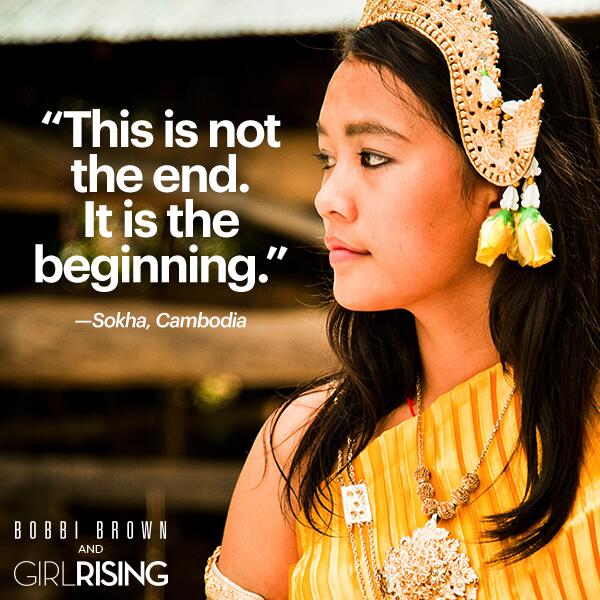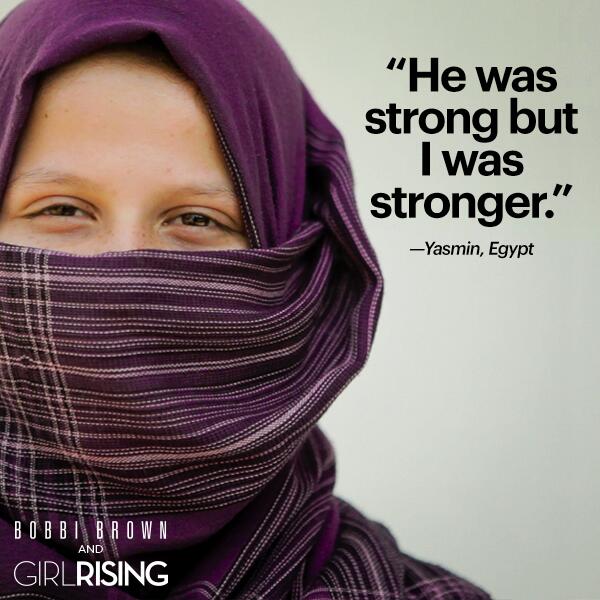Girl Rising is a revolutionary film that follows the life stories of nine girls from the developing world, who struggle every day for freedom, education and a voice in their home countries of Cambodia, Haiti, Nepal, Ethiopia, India, Peru, Sierra Leone and Afghanistan. I sat down with the film’s Academy Award-nominated Director Richard Robbins to discuss this incredible project.
Where did the idea for this film come from? Why girls’ education?
The original idea was mine. Our company had been hired to research a film about strategies for combating global poverty. As part of the research, I started reading about the impact of educating girls. I practically fell over. It was both immensely powerful and surprisingly clear. I just felt like it was something I had to do. My daughter was only a few years old at the time, and somehow I felt like I owed it to her. And to all the girls who aren’t lucky enough to be her.
How does Girl Rising break new ground for girls globally?
The issue of providing quality education for girls is already making enormous progress. We’re just trying to fuel the fire. Spread the word. This is an issue where we actually understand the answer. So in some way the biggest obstacle to creating the change we all want is making people aware of the issue and getting them involved. Through screening the film, that’s happening not just here in the U.S., but around the world.
10×10 Act is an organization created by our company, The Documentary Group. Our idea was always to drive the film and the action campaign together. Make them equal parts of the same initiative. The idea for the film came first — but when we began to review the successes and failures of socially active documentaries that had come before us, it was clear that we needed to build an organization that was capable of working in all the ways the film alone could not.
The girls in the film display unbelievable bravery in the face of overwhelming odds. What are some of the obstacles that limit their life choices? Is there common thread between the girls?
The obstacles for these girls are numerous. Early marriage, cultural paradigms, poor facilities, geographic isolation. Lots of them flow directly from being poor — which means not only can they not afford school, but they need to work to help support their families.
To me the common thread for the girls in the film, was that they each believed (against all evidence) that they deserved more. They just had a deep sense of their own power and potential. For many of the girls we profiled, they often found an expression for their hope and will in some kind of art — poetry, dance, art, song.
This film blends traditional documentary with scripted narration and dramatic interpretation. Is this a new type of storytelling? Could you explain how the narratives were crafted by working with the girls in the film, the country authors, and the actresses who voice them.
I don’t think this kind of storytelling is new but it may be new to film. I was a big fan of David Eggars’ What is the What. And I think there are a lot of filmmakers thinking about these ideas — certainly Joshua Oppenheimer’s The Act of Killing has generated similar conversations.
For me it was about bumping up against some of the limitations of documentary, and looking for ways to overcome them. The truth I wanted to convey in the film was as much about the spirit of these girls as it is about their circumstances. But documentary (particularly about the poor) has a hard time getting through to people about abstract ideas like spirit when it appears alongside difficult circumstances.
Also these girls are fundamentally voiceless. They often lack the confidence or the vocabulary or the cultural permission to communicate — especially to an American film crew (no matter how friendly). So the writers are the bridge. A way of helping to give the girls a voice. They each spent time with the girls themselves, learning their stories. And then of course the actresses were a literal voice — skilled at communicating emotion and depth through their voices.
An all-star line-up of celebrity activists lend their voices to the narration in this film. And yet, none of them appear on camera. The girls are front and center. Why was this decision important?
This was crucial to me. These girls are amazing. I didn’t want anything distracting from them. The actresses did a crucial job — they used their talent as voice performers. And they helped bring attention to the issue by just being a part of the project. But I wanted the audience looking at the girls themselves. Thinking about them. Feeling them. I completely understand why documentarians often put celebrities in their films when dealing with difficult subjects, but I really wanted to resist that. At the end of the day (and this is obviously just my opinion) it’s not ultimately effective in getting people to care.
Girl Rising is not just a film, but a growing movement to empower and give voice to girls. Can you talk about the curriculum that has been created to help transform storytelling into action?
We now have a curriculum to allow the film to be taught in schools. This is just one thing that we are doing to try and move the momentum of the film into real change in the world. We also have a corporate screening program and a community screening program. Hundreds of events. There is a push for international distribution that’s doing quite well. Just today we launched a partnership with the cosmetics company Bobbi Brown. We planned from the very beginning for the film to be a tool — and we’re doing everything we can to put that tool to use around the world.
Girl Rising was released to DVD by Cinedigm in March 2014 and is available now for order. Visit www.girlrising.com to watch the film and join the movement.
 Chrissy is an award-winning advocate for global education and champion for women and girls, who has been named a Global Shaper by the World Economic Forum. She works to support the UN Millennium Development Goals to end global poverty by campaigning for universal education and gender equality. She also served as a moderator for the World Bank’s Open Forum on Gender and Secretary Hillary Clinton’s Women in Public Service colloquium. As Founder of Ivy & Airwaves, she specializes in helping international organizations tap the power of communications to advance global and social impact. Her thought leadership on global affairs has been featured in the Huffington Post, Washington Post and more. Chrissy has a B.A. in International Relations from Mount Holyoke College and a Masters in International Education Policy from Harvard University.
Chrissy is an award-winning advocate for global education and champion for women and girls, who has been named a Global Shaper by the World Economic Forum. She works to support the UN Millennium Development Goals to end global poverty by campaigning for universal education and gender equality. She also served as a moderator for the World Bank’s Open Forum on Gender and Secretary Hillary Clinton’s Women in Public Service colloquium. As Founder of Ivy & Airwaves, she specializes in helping international organizations tap the power of communications to advance global and social impact. Her thought leadership on global affairs has been featured in the Huffington Post, Washington Post and more. Chrissy has a B.A. in International Relations from Mount Holyoke College and a Masters in International Education Policy from Harvard University.
Follow Christine Horansky on Twitter: www.twitter.com/MissMillennial



